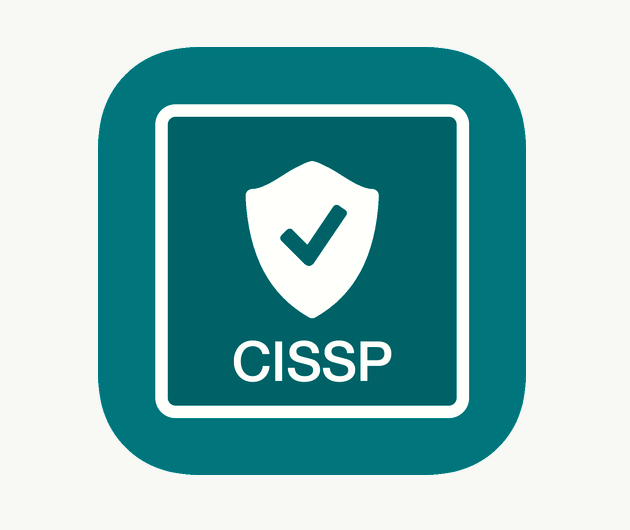CISSP - Question Bank 14
Test your knowledge of CISSP with these multiple choice questions. Each Question Bank includes 20 practice questions that have been designed to measure your knowledge of key ideas.
A key factor to keep in mind is that guessing is better than not answering a question.
Every single question on the CISSP exam is a four-option multiple choice question with a single correct answer. Some are straightforward, such as asking you to select a definition. Some are a bit more involved, such as asking you to select the appropriate concept or best practice. And some questions present you with a scenario or situation and ask you to select the best response.
StartQ1. What is a methodical examination or review of an environment to ensure compliance with regulations and to detect abnormalities, unauthorized occurrences, or outright crimes?
A. Penetration testing
B. Auditing
C. Risk analysis
D. Entrapment
Q2. Which of the following is not considered a type of auditing activity?
A. Recording of event data
B. Data reduction
C. Log analysis
D. Deployment of countermeasures
Q3. Monitoring can be used to perform all but which of the following?
A. Detect availability of new software patches
B. Detect malicious actions by subjects
C. Detect attempted intrusions
D. Detect system failures
Q4. What provides data for re-creating step-by-step the history of an event, intrusion, or system failure?
A. Security policies
B. Log files
C. Audit reports
D. Business continuity planning
Q5. What is the frequency of an IT infrastructure security audit or security review based on?
A. Asset value
B. Management discretion
C. Risk
D. Level of realized threats
Q6. Failure to perform which of the following can result in the perception that due care is not being maintained?
A. Periodic security audits
B. Deployment of all available safeguards
C. Performance reviews
D. Creating audit reports for shareholders
Q7. Audit trails are considered to be what type of security control?
A. Administrative
B. Passive
C. Corrective
D. Physical
Q8. Which essential element of an audit report is not considered to be a basic concept of the audit?
A. Purpose of the audit
B. Recommendations of the auditor
C. Scope of the audit
D. Results of the audit
Q9. Why should access to audit reports be controlled and restricted?
A. They contain copies of confidential data stored on the network.
B. They contain information about the vulnerabilities of the system.
C. They are useful only to upper management.
D. They include the details about the configuration of security controls.
Q10. What are used to inform would-be intruders or those who attempt to violate security policy that their intended activities are restricted and that any further activities will be audited and monitored?
A. Security policies
B. Interoffice memos
C. Warning banners
D. Honey pots
Q11. Which of the following focuses more on the patterns and trends of data rather than the actual content?
A. Keystroke monitoring
B. Traffic analysis
C. Event logging
D. Security auditing
Q12. Which of the following activities is not considered a valid form of penetration testing?
A. Denial of service attacks
B. Port scanning
C. Distribution of malicious code
D. Packet sniffing
Q13. The act of searching for unauthorized modems is known as ___________________.
A. Scavenging
B. Espionage
C. System auditing
D. War dialing
Q14. Which of the following is not a useful countermeasure to war dialing?
A. Restricted and monitored Internet access
B. Imposing strong remote access security
C. Callback security
D. Call logging
Q15. The standard for study and control of electronic signals produced by various types of electronic hardware is known as ___________________.
A. Eavesdropping
B. TEMPEST
C. SESAME
D. Wiretapping
Q16. Searching through the refuse, remains, or leftovers from an organization or operation to discover or infer confidential information is known as ___________________.
A. Impersonation
B. Dumpster diving
C. Social engineering
D. Inference
Q17. Which of the following is not an effective countermeasure against inappropriate content being hosted or distributed over a secured network?
A. Activity logging
B. Content filtering
C. Intrusion detection system
D. Penalties and termination for violations
Q18. One of the most common vulnerabilities of an IT infrastructure and hardest to protect against is the occurrence of ___________________.
A. Errors and omissions
B. Inference
C. Data destruction by malicious code
D. Data scavenging
Q19. The willful destruction of assets or elements within the IT infrastructure as a form of revenge or justification for perceived wrongdoing is known as ___________________.
A. Espionage
B. Entrapment
C. Sabotage
D. Permutation
Q20. What is the most common reaction to the loss of physical and infrastructure support?
A. Deploying OS updates
B. Vulnerability scanning
C. Waiting for the event to expire
D. Tightening of access controls
- Question Bank 00
- Question Bank 01
- Question Bank 02
- Question Bank 03
- Question Bank 04
- Question Bank 05
- Question Bank 06
- Question Bank 07
- Question Bank 08
- Question Bank 09
- Question Bank 10
- Question Bank 11
- Question Bank 12
- Question Bank 13
- Question Bank 14
- Question Bank 15
- Question Bank 16
- Question Bank 17
- Question Bank 18
- Question Bank 19


